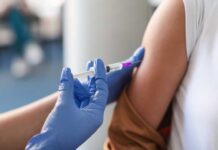
The discovery of a single brain chemical—SGK1—rewrites everything we thought we knew about how childhood trauma imprints itself onto our minds, binding the scars of youth to the darkest corners of adult depression.
Story Snapshot
- SGK1 levels soar in the brains of suicide victims, revealing a chemical fingerprint of despair.
- Genetic variants tied to early adversity are linked to increased SGK1, connecting past trauma to present risk.
- Researchers spotlight SGK1 as a bridge between childhood trauma and adult depression, sparking new hope for intervention.
- This revelation redefines the science of mental illness, challenging decades of assumptions about trauma and brain chemistry.
SGK1: The Chemical Link Between Childhood Trauma and Depression
SGK1, a stress-responsive kinase, emerges as the missing link scientists have long sought in understanding why some individuals spiral from childhood trauma into debilitating depression. Elevated SGK1 levels have been measured in postmortem brain tissue from suicide victims, a finding that scientists believe is not coincidental but causal. The presence of SGK1 indicates that the chemical pathways activated by early adversity remain open for decades, quietly shaping the trajectory of mental health. This chemical signature explains why some people, despite surviving similar traumas, succumb to depression while others do not. The identification of SGK1 could finally shift clinical focus from vague psychological models to targeted biochemical intervention.
Watch:
SGK1’s Role in Suicidal Behavior: Evidence from Brain Studies
Postmortem analyses of suicide victims’ brains show a consistent pattern: SGK1 levels are substantially higher in regions associated with emotion and decision-making. This points to a direct role for SGK1 in the mechanisms leading to suicidal ideation and action. Researchers hypothesize that chronic elevation of SGK1 disrupts neural circuits responsible for mood regulation, impulse control, and resilience. These disturbances likely tip the balance toward hopelessness and despair, making the leap from trauma to suicide tragically predictable for some. The chemical’s presence not only marks the legacy of trauma but may also serve as a warning sign for clinicians seeking to identify those at highest risk. The ability to detect and modulate SGK1 could revolutionize suicide prevention, giving families and doctors a tangible target for intervention.
Redefining Psychiatric Treatment: The Future of SGK1 Research
The emergence of SGK1 as a central player in trauma-linked mental illness forces a reevaluation of traditional psychiatric approaches. For years, talk therapy and antidepressants have dominated treatment, often with limited success. SGK1 offers a biochemical target that is measurable, modifiable, and deeply tied to the root causes of suffering. Researchers advocate for integrating SGK1 screening into routine mental health assessments, especially for those with a history of childhood adversity. This approach aligns with conservative values of prevention, accountability, and personal responsibility, emphasizing the importance of early diagnosis and tailored intervention. As SGK1 research progresses, the boundaries between psychology and biology blur, promising a future where mental illness is approached with the same precision as diabetes or heart disease.
Sources:
https://www.ndtv.com/health/scientists-find-brain-chemical-tied-to-trauma-and-depression-study-9614831
https://www.sciencedaily.com/releases/2025/11/251110021114.htm


















